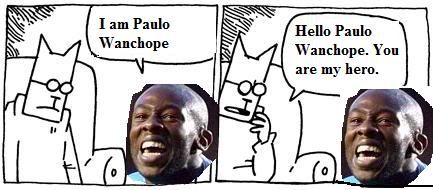A monk lives at a temple at the bottom of the hill. Every week, he starts at sunrise and climbs up to the temple at the top of the hill, getting there exactly at sunset. He spends the night at the temple in meditation, then the next morning starts again at sunrise, and walks down the hill to the lower temple, arriving at sunset. He doesn't walk at a steady pace, and often will stop to eat some of the dried fruit he has, or rest, walk slower, etc.
Assuming sunrise and sunset are exactly the same on both days, and that the there is only one path between the temples, will the monk be at the same place at the same time at some point on both days? Prove why he must, or why he won't necessarily, 2 easy ways to explain it.


 Hard Puzzles
Hard Puzzles

 Reply With Quote
Reply With Quote





 I'd find one myself, but I really can't be bothered right now.
I'd find one myself, but I really can't be bothered right now.



